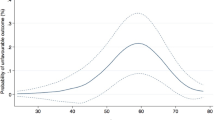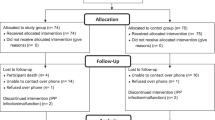Abstract
We evaluated outcomes in patients undergoing penile prothesis (PP) implantation for erectile dysfunction (ED) and concurrent Peyronie’s Disease (PD). A clinician-developed survey to assess satisfaction was sent to 354 patients who underwent PP placement from 2012–2018 by a single-surgeon. Results were compared based on the presence or absence of concurrent PD. 79 patients completed the survey (response rate 22%), including 38 patients (48%) with concurrent ED and PD (ED/PD). Mean follow-up was 31 months (standard deviation 19). 87% felt their condition was “very much” or “much” improved. There was no significant difference in patient-reported overall satisfaction with their PP or satisfaction with current penile length/girth based on the presence or absence of PD. 87% of patients with PD were satisfied with their degree of penile straightening after PP plus or minus concurrent straightening maneuvers such as modeling, plication, or incision/grafting. Sub-group analyses were performed to evaluate outcomes in those with concurrent PD/ED who required plaque incision/grafting at the time of PP placement for more severe deformity (n = 19). 47% of these patients were dissatisfied with their current penile length, compared with only 16% of those patients with PD/ED who did not require grafting (p = 0.05). In conclusion, the presence of PD alone may not impact PP satisfaction, but patients with more severe baseline deformity who require incision/grafting may be less satisfied with outcomes including penile length.
This is a preview of subscription content, access via your institution
Access options
Subscribe to this journal
Receive 8 print issues and online access
$259.00 per year
only $32.38 per issue
Buy this article
- Purchase on Springer Link
- Instant access to full article PDF
Prices may be subject to local taxes which are calculated during checkout




Similar content being viewed by others
Data availability
Additional study data are available from the corresponding author on reasonable request.
References
Nehra A, Alterowitz R, Culkin DJ, Faraday MM, Hakim LS, Heidelbaugh JJ, et al. Peyronie’s Disease: AUA guideline. J Urol. 2015;194:745–53.
Mulhall JP, Schiff J, Guhring P. An analysis of the natural history of Peyronie’s disease. J Urol. 2006;175:2115–8.
Burri A, Porst H. The relationship between penile deformity, age, psychological bother, and erectile dysfunction in a sample of men with Peyronie’s Disease (PD). Int J Impot Res. 2018;30:171–8.
Rosen R, Catania J, Lue T, Althof S, Henne J, Hellstrom W, et al. Impact of Peyronie’s disease on sexual and psychosocial functioning: qualitative findings in patients and controls. J Sex Med. 2008;5:1977–84.
Hazir B, Haberal HB, Asci A, Muneer A, Gudeloglu A. Erectile dysfunction management: a critical appraisal of clinical practice guidelines with the AGREE II instrument. Int J Impot Res. 2022;34:471–6.
Burnett AL, Nehra A, Breau RH, Culkin DJ, Faraday MM, Hakim LS, et al. Erectile dysfunction: AUA guideline. J Urol. 2018;200:633–41.
Levine LA, Becher EF, Bella AJ, Brant WO, Kohler TS, Martinez-Salamanca JI, et al. Penile prosthesis surgery: current recommendations from the international consultation on sexual medicine. J Sex Med. 2016;13:489–518.
Hellstrom WJ, Montague DK, Moncada I, Carson C, Minhas S, Faria G, et al. Implants, mechanical devices, and vascular surgery for erectile dysfunction. J Sex Med. 2010;7:501–23.
Shah T, Wang R. A review of factors affecting patient satisfaction with inflatable penile prosthesis. Sex Med Rev. 2021;9:350–7.
Levine LA, Benson J, Hoover C. Inflatable penile prosthesis placement in men with Peyronie’s disease and drug-resistant erectile dysfunction: a single-center study. J Sex Med. 2010;7:3775–83.
Habous M, Tal R, Tealab A, Aziz M, Sherif H, Mahmoud S, et al. Predictors of satisfaction in men after penile implant surgery. J Sex Med. 2018;15:1180–6.
Khera M, Bella A, Karpman E, Brant W, Christine B, Kansas B, et al. Penile prosthesis implantation in patients With Peyronie’s Disease: results of the PROPPER study demonstrates a decrease in patient-reported depression. J Sex Med. 2018;15:786–8.
Manfredi C, Fortier É, Faix A, Martínez-Salamanca JI. Penile implant surgery satisfaction assessment. J Sex Med. 2021;18:868–74.
Akin-Olugbade O, Parker M, Guhring P, Mulhall J. Determinants of patient satisfaction following penile prosthesis surgery. J Sex Med. 2006;3:743–8.
Palasi S, Howell S, Green TP, Kannady C, Slaughter KB, Yang B, et al. Does knowing pre-operative penile length influence patient satisfaction post penile prosthesis implantation? Int J Impot Res. 2021. https://doi.org/10.1038/s41443-021-00472-1. Online ahead of print.
Mulhall JP, Jahoda A, Aviv N, Valenzuela R, Parker M. The impact of sildenafil citrate on sexual satisfaction profiles in men with a penile prosthesis in situ. BJU Int. 2004;93:97–9.
Salonia A, Corona G, Jones TH, Kadioglu A, Martinez-Salamanca I, Minhas S, et al. (EAU Sexual and Reproductive Health Guidelines Panel). European Association of Urology Sexual and Reporductive Health Guidelines. EAU Guidelines Edn presented at the EAU Annual Congress Amsterdam. 2020 ISBN 978-94-92671-07-3 2020.
Ziegelmann MJ, Farrell MR, Levine LA. Modern treatment strategies for penile prosthetics in Peyronie’s disease: a contemporary clinical review. Asian J Androl. 2020;22:51–9.
Levine LA, Dimitriou RJ. A surgical algorithm for penile prosthesis placement in men with erectile failure and Peyronie’s disease. Int J Impot Res. 2000;12:147–51.
Hakim LS, Kulaksizoglu H, Hamill BK, Udelson D, Goldstein I. A guide to safe corporotomy incisions in the presence of underlying inflatable penile cylinders: results of in vitro and in vivo studies. J Urol. 1996;155:918–23.
Farrell MR, Abdelsayed GA, Ziegelmann MJ, Levine LA. A comparison of hemostatic patches versus pericardium allograft for the treatment of complex Peyronie’s Disease With penile prosthesis and plaque incision. Urology. 2019;129:113–8.
Hatzichristodoulou G. The PICS technique: a novel approach for residual curvature correction during penile prosthesis implantation in patients with severe Peyronie’s Disease using the collagen fleece tachoSil. J Sex Med. 2018;15:416–21.
Falcone M, Preto M, Ceruti C, Timpano M, Garaffa G, Sedigh O, et al. A comparative study between 2 different grafts used as patches after plaque incision and inflatable penile prosthesis implantation for end-stage Peyronie’s Disease. J Sex Med. 2018;15:848–52.
Caraceni E, Utizi L. A questionnaire for the evaluation of quality of life after penile prosthesis implant: quality of life and sexuality with penile prosthesis (QoLSPP): to what extent does the implant affect the patient’s life? J Sex Med. 2014;11:1005–12.
Althof SE, Corty EW, Levine SB, Levine F, Burnett AL, McVary K, et al. EDITS: development of questionnaires for evaluating satisfaction with treatments for erectile dysfunction. Urology. 1999;53:793–9.
Rosen RC, Riley A, Wagner G, Osterloh IH, Kirkpatrick J, Mishra A. The international index of erectile function (IIEF): a multidimensional scale for assessment of erectile dysfunction. Urology. 1997;49:822–30.
Hellstrom WJ, Feldman R, Rosen RC, Smith T, Kaufman G, Tursi J. Bother and distress associated with Peyronie’s disease: validation of the Peyronie’s disease questionnaire. J Urol. 2013;190:627–34.
Wilson SK, Delk JR 2nd. A new treatment for Peyronie’s disease: modeling the penis over an inflatable penile prosthesis. J Urol. 1994;152:1121–3.
Rahman NU, Carrion RE, Bochinski D, Lue TF. Combined penile plication surgery and insertion of penile prosthesis for severe penile curvature and erectile dysfunction. J Urol. 2004;171:2346–9.
Sokolakis I, Pyrgidis N, Ziegelmann MJ, Mykoniatis I, Köhler TS, Hatzichristodoulou G. Penile prosthesis implantation combined with grafting techniques in patients with Peyronie’s disease and erectile dysfunction: a systematic review. Sex Med Rev. 2021;10:451–9.
Deveci S, Martin D, Parker M, Mulhall JP. Penile length alterations following penile prosthesis surgery. Eur Urol. 2007;51:1128–31.
Salter CA, Bach PV, Jenkins L, Bennett N, Yafi FA, El Khatib F, et al. Development and validation of the satisfaction survey for inflatable penile implant (SSIPI). J Sex Med. 2021;18:1641–51.
Farrell MR, Ziegelmann MJ, Bajic P, Levine LA. Peyronie’s disease and the female sexual partner: a comparison of the male and female experience. J Sex Med. 2020;17:2456–61.
Funding
This project was funded by an investigator-initiated grant from Coloplast Corporation.
Author information
Authors and Affiliations
Contributions
Conceived and/or designed the work that led to the submission, acquired data, and/or played an important role in interpreting the results: MJZ, WAL, PB, LAL. Drafted or revised the manuscript: MJZ, WAL, PB, LAL. Approved the final version: MJZ, WAL, PB, LAL. Agreed to be accountable for all aspects of the work in ensuring that questions related to the accuracy or integrity of any part of the work are appropriately investigated and resolved: MJZ, WAL, PB, LAL.
Corresponding author
Ethics declarations
Competing interests
Laurence Levine is a consultant for Boston Scientific corporation. Matthew Ziegelmann is a consultant for Endo Pharmaceuticals, Inc.
Additional information
Publisher’s note Springer Nature remains neutral with regard to jurisdictional claims in published maps and institutional affiliations.
Supplementary information
Rights and permissions
About this article
Cite this article
Ziegelmann, M.J., Langbo, W.A., Bajic, P. et al. Comparison of patient-reported outcomes after penile prosthesis placement in men with and without Peyronie’s disease. Int J Impot Res 35, 569–576 (2023). https://doi.org/10.1038/s41443-022-00600-5
Received:
Revised:
Accepted:
Published:
Issue Date:
DOI: https://doi.org/10.1038/s41443-022-00600-5
This article is cited by
-
Comment on “Comparison of patient-reported outcomes after penile prosthesis placement in men with and without Peyronie’s disease”
International Journal of Impotence Research (2023)



